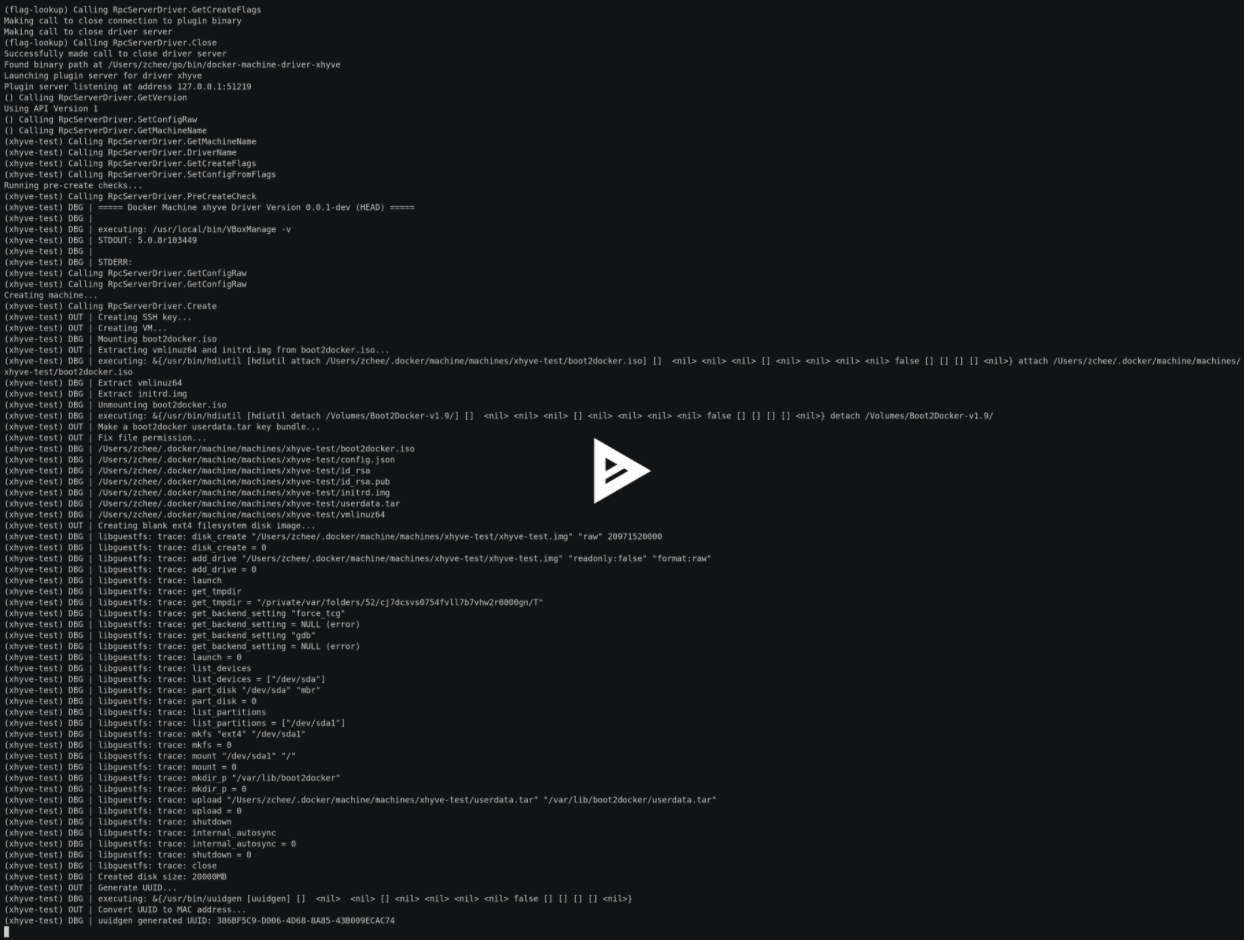
Many of the ideas I used for the benchmark tests were taken from the post linked above.
#Docker for mac xhyve driver
If you are only interested in getting the xhyve driver working then feel free to skim through the benchmarks, but be sure to take a look at the conclusion for the final verdict.īelow are the specs of the OS X machine that was used to run my benchmarks. The remainder of the post describes the benchmark and performance results of the VBox driver and the xhyve driver. If you can interact with the Docker daemon you should be in business. docker-machine create -driver xhyve -xhyve-experimental-nfs-share test

sudo mv /etc/exports & touch /etc/exports You will also need to clean out your /etc/exports file if you have made changes. Sudo chmod u+s $(brew -prefix )/opt/docker-machine-driver-xhyve/bin/docker-machine-driver-xhyve sudo chown root:wheel $(brew -prefix )/opt/docker-machine-driver-xhyve/bin/docker-machine-driver-xhyve This should hopefully be fixed in the future but is at least something to be aware of. There is currently a caveat to using this driver where you need to change some permissions. As of docker-machine version 0.5.6_1, support has been added for the xhyve driver. This just means there was a version conflict somewhere. If you have the dockertoolbox installed already you might some errors in the output. After you have the toolbox installed, go grab the docker-machine xhyve driver. This might take a little bit depending on how fast your internet connection is.
#Docker for mac xhyve install
Once you have cask installed you should be able to install the remaining components. After you have brew installed you should be able to get it from the command line with the following command. You will also need to have brew cask installed.
#Docker for mac xhyve how to
The post goes in to depth on how to install and use the docker-machine xhyve driver if you are interested in a more in depth look at how to get things working. If you are interested in more of the details on how to get the xhyve driver, I suggest taking a look at this awesome blog post.

I will be going over the bare minimum installation instructions to getting everything working. The xhyve docker-machine driver project has recently closed a ticket to be added to brew so it is much less complicated to get working. Definitely keep an eye on the xhyve and docker-machine xhyve projects if you are looking for an alternative to either VBox or VMWare. It is so young that it is still not an officially supported driver yet, though it looks like it is well on its way. It is still very young but shows a lot of potential.Įven younger than the xhyve project itself is the xhyve driver for docker-machine. xhyve is a port of the byhve project, which aims to bring high performance virtualization with a light footprint to OS X. Recently, as of July 2015, the xhyve hypervisor project has been available on OS X. Making the jump to VBox 5.x may, and most likely should solve your problems but I have been curious about what other options are out there. The Docker Toolbox ships the newer release so there is no reason not to upgrade. So if you aren’t running on 5.x definitely make the jump. To Oracle’s credit though, many of these performance issues have actually been addressed in the vbox 5.0.0 release.

The tl dr of the post is that that the VMWare hypervisor has better performance. This write up is a very detailed comparison of the performance between VBox and VMWare. I have run in to some other performance issues using VBox. In fact, I have written about my own workaround here. My biggest gripe thus far with Vbox is that their shared folders technology to sync files between the host and VM is slooooow.

Obviously it works out of the box but if you have used Virtualbox for any amount of time you have probably discovered some of its quirks. If you have used docker-machine you are probably familiar with the Virtualbox driver, the driver that ships as by default. If you have spent any time working with docker-machine and Docker on OS X you’ve probably run across some type of roadblock to getting your dev environment working. Getting a usable and productive dev environment working with Docker on OS X is not exactly trivial, although it is getting much better.


 0 kommentar(er)
0 kommentar(er)
